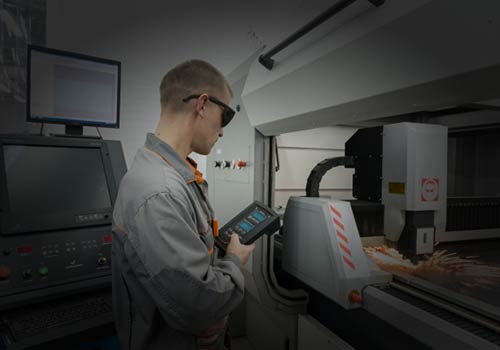Avalanche Technology, headquartered in Fremont, California, is the world leader in Spin Transfer Torque Magnetic RAM (STT-MRAM) non-volatile memory leveraging perpendicular magnetic tunnel junction (pMTJ) cell structure manufactured on 300mm standard CMOS process.
Backed by more than 300+ granted patents around cell, circuit, and system design leveraging MRAM, our technology and products provide breakthrough speeds, unlimited endurance and non-volatility while reducing power and cost. With such attributes, our technology will serve and exceed our customers’ objectives as a replacement for SRAM, eFlash, and ROM in embedded applications in addition to discrete SRAM, non-volatile SRAM, NOR and DRAM.
1. Industrial
We are transitioning from centralized industrial systems where dumb nodes would transmit information (sometimes aggregated to reduce the amount of data) to the central control systems for analytics and control. These systems relied heavily on reliable synchronous, low latency communication links. Examples of such systems were used in the power grid (SCADA: supervisory control and data acquisition) and PLCs (programmable Logic Control) in Manufacturing systems. Today, Smart Factories use a modular approach by running virtual systems to monitor physical processes relying on decentralized decisions. What used to happen to improve efficiency by using data analytics is now happening at the nodes with Artificial Intelligence and machine learning. With the decision making moving to the nodes, the processing systems now need to track and maintain the exact status of mission critical decisions independently as it is no longer stored in a central location.
With this transition the requirement on the nodes has suddenly changed from simply storing the sensor’s last data to large amounts of learning behavior that cannot simply be sent back to the center in case of power or system failure.
The next generation of compute capable, intelligent IoT nodes will rely on the integration of the high density, reliable, instant access “Next Generation MRAM” from Avalanche Technology that delivers the needed high performance unified memory architecture.
Serial High Performance
| Densities | 1Mb, 4Mb, 8Mb, 16Mb |
| Voltages | 1.8V (1.71V to 2.00V) 3.0V (2.70V to 3.60V) |
| Packages | 8-pad WSON, 8-pin SOIC, 24-ball FBGA |
| Temperature Ranges | Industrial (-40°C to 85°C), Industrial Plus (-40°C to 105°C) |
Serial SPI
| Densities | 1Mb, 4Mb, 8Mb, 16Mb |
| Voltages | 3.0V (2.70V to 3.60V), 3V to 3V |
| Packages | 8-pad WSON, 8-pin SOIC , 3V to 3V |
| Temperature Ranges | Industrial (-40°C to 85°C), Industrial Plus (-40°C to 105°C) |
Parallel x8
| Densities | 1Mb, 4Mb, 8Mb, 16Mb, 32Mb |
| Voltages | 3.0V (2.70V to 3.60V) |
| Packages | 44-pin TSOP, 48-ball FBGA, 48-ball FBGA |
| Temperature Ranges | Industrial (-40°C to 85°C), Industrial Plus (-40°C to 105°C) |
Parallel x16
| Densities | 1Mb, 4Mb, 8Mb, 16Mb, 32Mb, 64Mb |
| Voltages | 3.0V (2.70V to 3.60V) |
| Packages | 44-pin TSOP, 54-pin TSOP, 48-ball FBGA |
| Temperature Ranges | Industrial (-40°C to 85°C), Industrial Plus (-40°C to 105°C) |

2. Internet of Things
We have seen many technical and business revolutions in the computer industry.
The first was the replacement of the dumb terminal by the intelligent capable personal computers, which enabled the Internet by its rich graphics user interface and local processing.
The second was the mobile revolution which took off by the introduction of the smartphones capable of computing the edge.
We are in the early stages of a third revolution. IoT (Internet of Things) has been on the cusp of a major growth cycle. At its early stage people looked at IoT as a connected sensor or sensors (Sensor Fusion processors combined the data from many sensors and logged it for transmission to the cloud in burst to conserve energy). The data was sent to the cloud for analytics and logistics tracking. The ability to process the collected data at the edge (Edge Computing) combined with Artificial intelligence (facial recognition, language processing, collision avoidance, etc.) at the IoT node to reduce latency and unnecessary data transmission will transform our understanding of what an IoT node is and fuel the growth of sophisticated applications at the edge. The increased efficiency of local processing, reduced cost for connectivity, reduced need for cloud storage and data analytics will deliver value to the consumer and operators alike.
The next generation of compute capable, intelligent IoT nodes will rely on the integration of the “Next Generation MRAM” from Avalanche Technology that delivers the needed high performance unified memory architecture.
Serial Ultra Low Power
| Densities | 1Mb, 4Mb, 8Mb, 16Mb |
| Voltages | 1.8V (1.71V to 2.00V) 3.0V (2.70V to 3.60V) |
| Packages | 8-pad WSON, 8-pin SOIC 24-ball FBGA |
| Temperature Ranges | Industrial (-40°C to 85°C), Industrial Plus (-40°C to 105°C) |

3. Aerospace
Serial QSPI Space Grade (Gen 1)
| Densities | 4Mb, 8Mb
|
| Voltages | 1.8V (1.70V to 2.00V)
|
| Packages | 8-pin WSON, 16-pin SOIC |
| Temperature Ranges | Aerospace (-40°C to 105°C) |
Serial Space Grade (Gen 2)
| Densities | 16Mb
|
| Voltages | 1.8V (1.71V to 2.00V) 3.0V (2.70V to 3.60V) |
| Packages | 8-pin WSON, 8-pin SOIC |
| Temperature Ranges | Aerospace (-40°C to 125°C) |
Parallel x16 Space Grade (Gen 2)
| Densities | 16Mb, 32Mb, 64Mb |
| Voltages | 3.0V (2.70V to 3.60V)
|
| Packages | 48-ball FBGA
|
| Temperature Ranges | Aerospace (-40°C to 125°C) |
Serial OSPI Space Grade (Gen 3)
| Densities | 512Mb, 1Gb |
| Voltages | 1.8V (1.71V to 2.00V) 3.0V (2.70V to 3.60V) |
| Packages | 36-ball FBGA |
| Temperature Ranges | Aerospace (-40°C to 125°C) |
Parallel x32 Space Grade (Gen 3)
| Densities | 512Mb, 1Gb, 2Gb, 4Gb |
| Voltages | 3.0V (2.70V to 3.60V)
|
| Packages | 142-ball FBGA |
| Temperature Ranges | Aerospace (-40°C to 125°C) |

4. Storage
The slowest part of any compute platform today is the Input Output subsystem, known as the dreaded bottleneck. The bottleneck appears in many levels. System designers have tackled this by introducing cache’s to their designs. Fastest cache architectures hold the data and do not write it back to slower subsystems. This transient data is vulnerable to system power failures where data in the cache has not been stored. System designers have solved this by using Non-volatile cache architectures. In many systems it is done at the Operating system level using NVDIMMs or by holding disk transactions in a NV transaction log in a RAID disk controller or both.
STT-MRAM with its instant access speed and non volatility solves this problem and open up the opportunity to system designers to improve system performance and speed up transactions in a safe reliable manner without the need for battery or capacitor backup.
At the system level, STT-MRAM is the ideal solution to build the next generation of M2 module for the common computer platform as a Level 3 cache replacing the low performing NAND modules, or a high density PCI RAID controller to improve IO performance achieving millions of Random read/write or very low latency IOPs.
The “Next Generation MRAM” from Avalanche Technology delivers the needed high performance unified memory architecture to remove these system bottlenecks safely and reliably.
- JESD79-3 compatible interface
- 1Gb-4Gb densities
- Up to 1333MHz operation
- 1.35V Vcc/Vccq
- Industry-standard BGA packages




